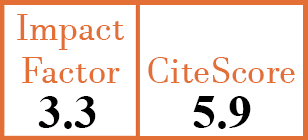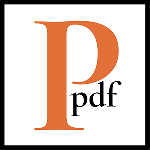Full Papers
Pro-fibrotic effect of IL-6 via aortic adventitial fibroblasts indicates IL-6 as a treatment target in Takayasu arteritis
X. Kong1, L. Ma2, Z. Ji3, Z. Dong4, Z. Zhang5, J. Hou6, S. Zhang7, L. Ma8, L. Jiang9
- Department of Rheumatology, Zhongshan Hospital, Fudan University, Shanghai, China.
- Department of Rheumatology, Zhongshan Hospital, Fudan University, Shanghai, China.
- Department of Rheumatology, Zhongshan Hospital, Fudan University, Shanghai, China.
- Department of Vascular Surgery, Zhongshan Hospital, Fudan University, Shanghai, China.
- Department of Pathology, Shanghai Medical College, Fudan University, Shanghai, China.
- Department of Pathology, Zhongshan Hospital, Fudan University, Shanghai, China.
- Key Laboratory of Glycoconjugate Research Ministry of Public Health, Gene Research Center, Department of Biochemistry and Molecular Biology, School of Basic Medical Sciences, Fudan University, Shanghai, China.
- Department of Rheumatology, Zhongshan Hospital, Fudan University, Shanghai, China.
- Department of Rheumatology, Zhongshan Hospital, Fudan University, Shanghai, China. zsh-rheum@hotmail.com
CER10334
2018 Vol.36, N°1
PI 0062, PF 0072
Full Papers
Free to view
(click on article PDF icon to read the article)
PMID: 28770707 [PubMed]
Received: 16/02/2017
Accepted : 18/04/2017
In Press: 06/07/2017
Published: 05/02/2018
Abstract
OBJECTIVES:
This study aimed to clarify potential mechanism of IL-6 involved in adventitial fibrosis via adventitial fibroblast in Takayasu arteritis (TAK).
METHODS:
Immunohistochemistry and double-labelled immunofluorescence were performed on vascular tissue from patients with TAK and controls. Human aorta adventitial fibroblast (AAF) was cultured and stimulated with interleukine 6 (IL-6)/IL-6 receptor (IL-6R). Real-time PCR, western blot, enzyme-linked immunosorbent assays, chromatin immunoprecipitation (ChIP) and reporter assay were conducted in vitro experiments to determine effect of IL-6/IL-6R on AAF.
RESULTS:
The expression of IL-6, IL-6R, collagen I, collagen III, fibronectin, α-smooth muscle actin (α-SMA), and transforming growth factor (TGF-β) in TAK arteries was significantly higher than that in the normal arteries. Co-localisation of α-SMA and IL-6 and a positive correlation between their expression were observed in local lesions. In vitro experiments, collagen I, collagen III, fibronectin, α-SMA, and TGF-β expression increased significantly after stimulation and this fibrogenesis of AAFs was induced in TGF-β-dependent and -independent manners. Additionally, phosphorylation of JAK2, STAT3 and Akt was significantly enhanced both in IL-6/IL-6R-treated AAFs in vitro and in TAK adventitial α-SMA positive cells. When AAFs were pretreated with inhibitors against JAK2, STAT3, and Akt, fibrosis was significantly reduced. Furthermore, IL-6/IL-6R promoted mRNA expression of IL-6 and MCP-1 in AAFs. Finally, according to ChIP and reporter assay results, STAT3 was the main transcriptional factor in the fibrosis of AAFs induced by IL-6/IL-6R.
CONCLUSIONS:
IL-6/IL-6R induces fibrogenesis of AAFs via the JAK2/STAT3 and JAK2/Akt pathways, which provides theoretical evidence for IL-6 as a treatment target in TAK.



